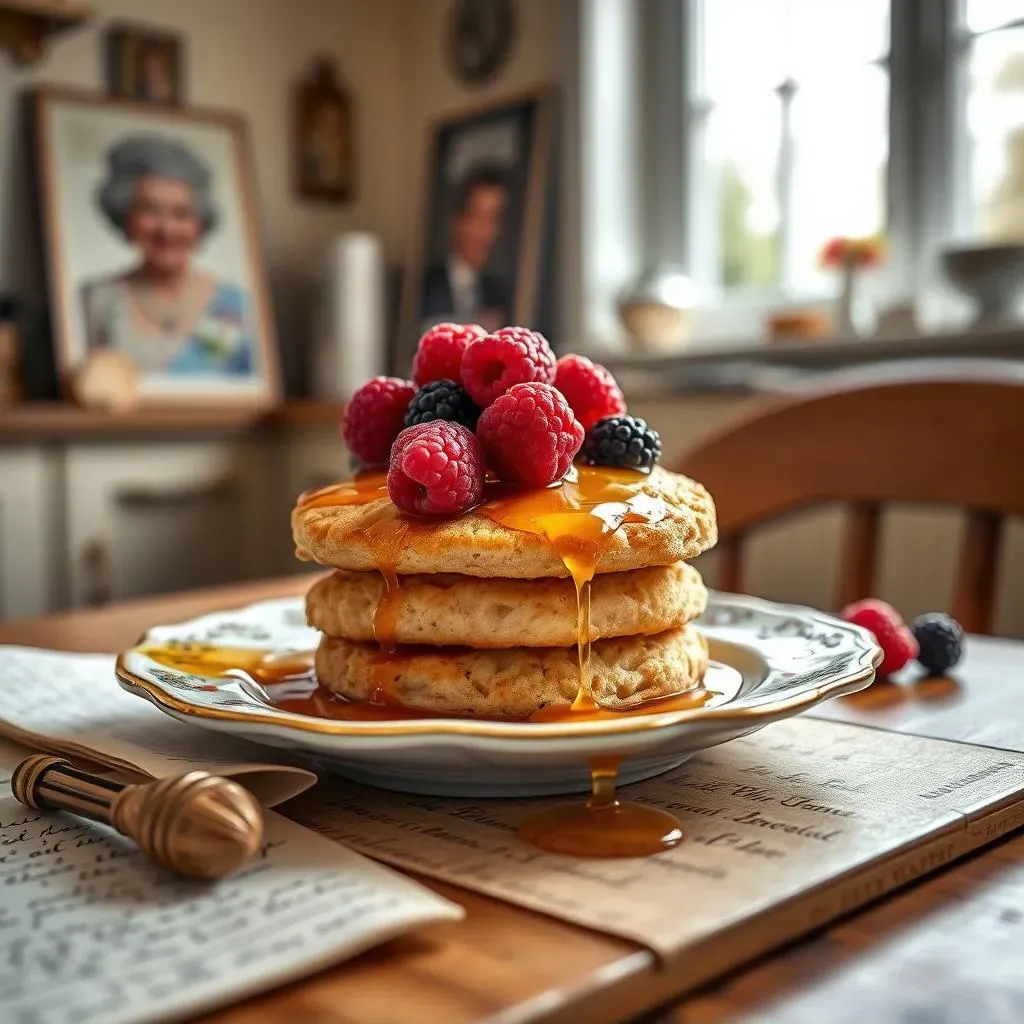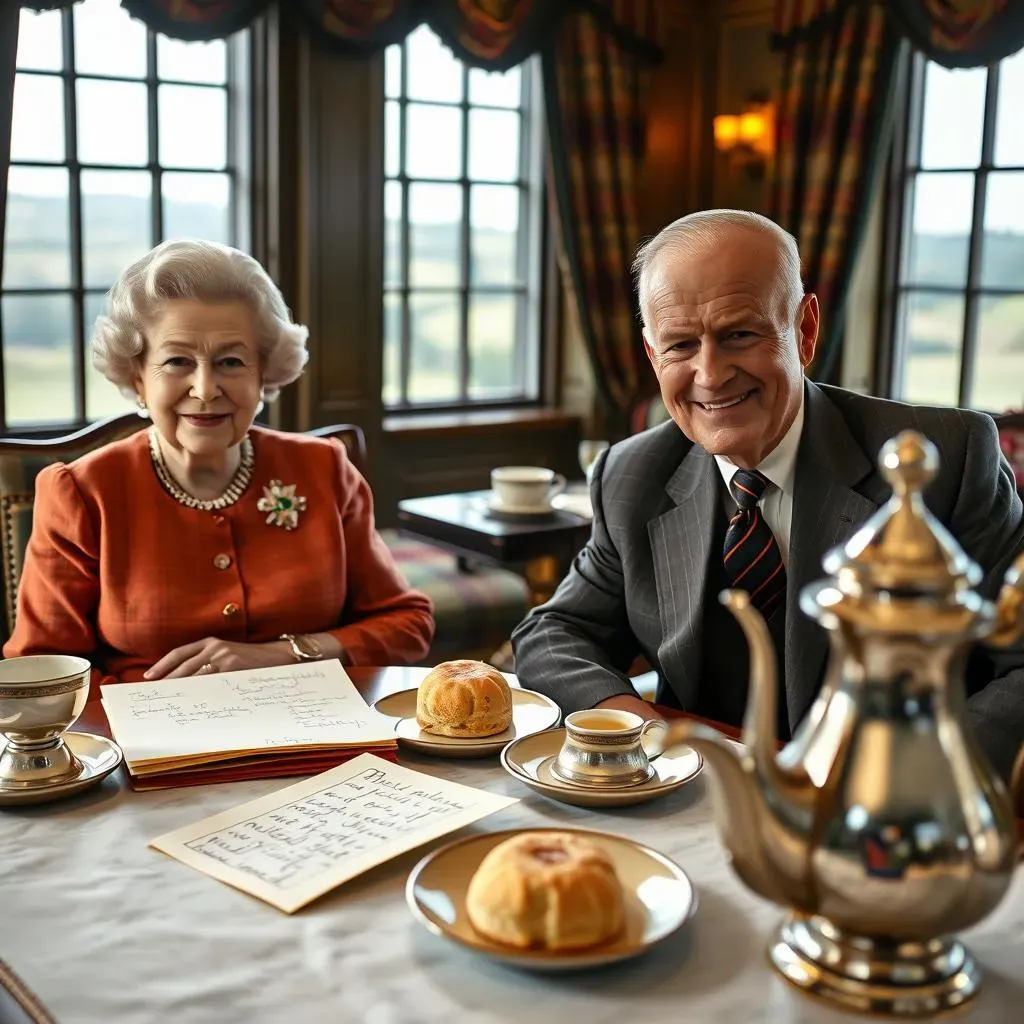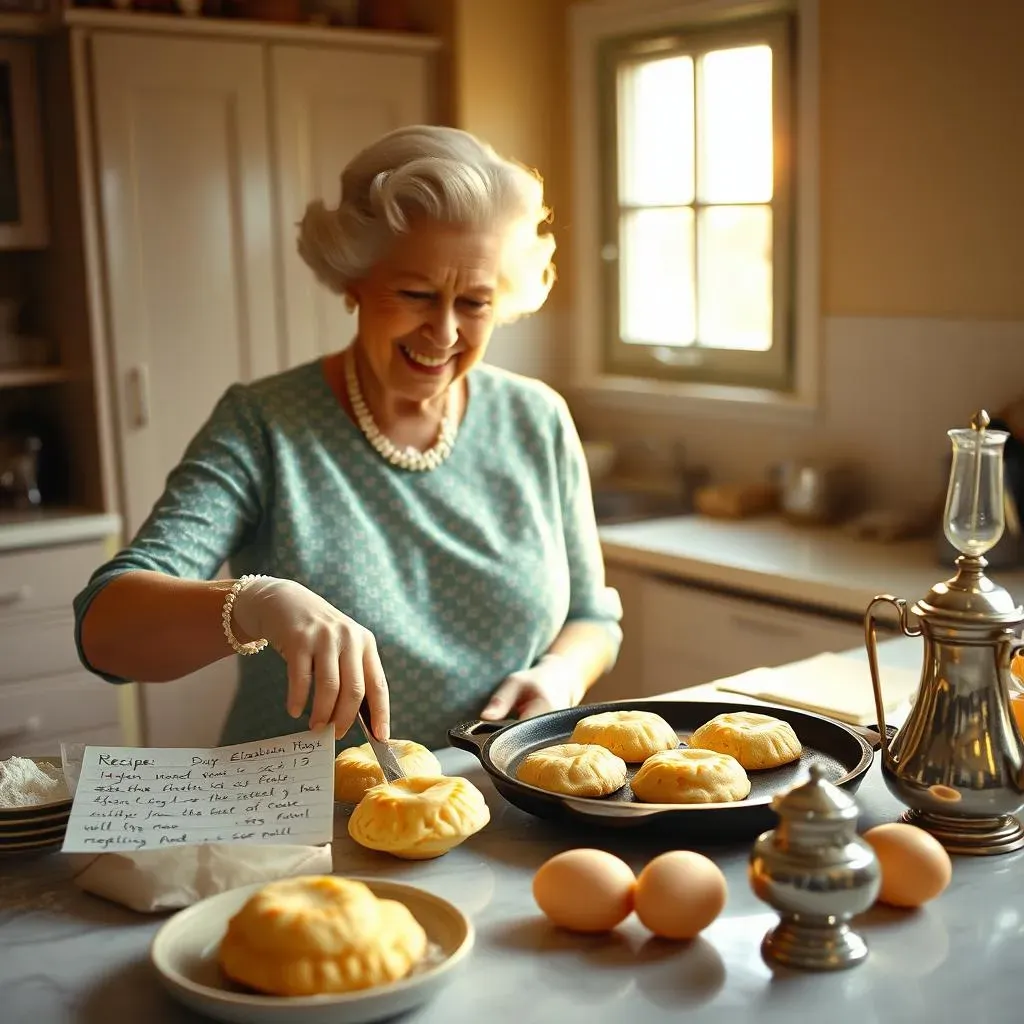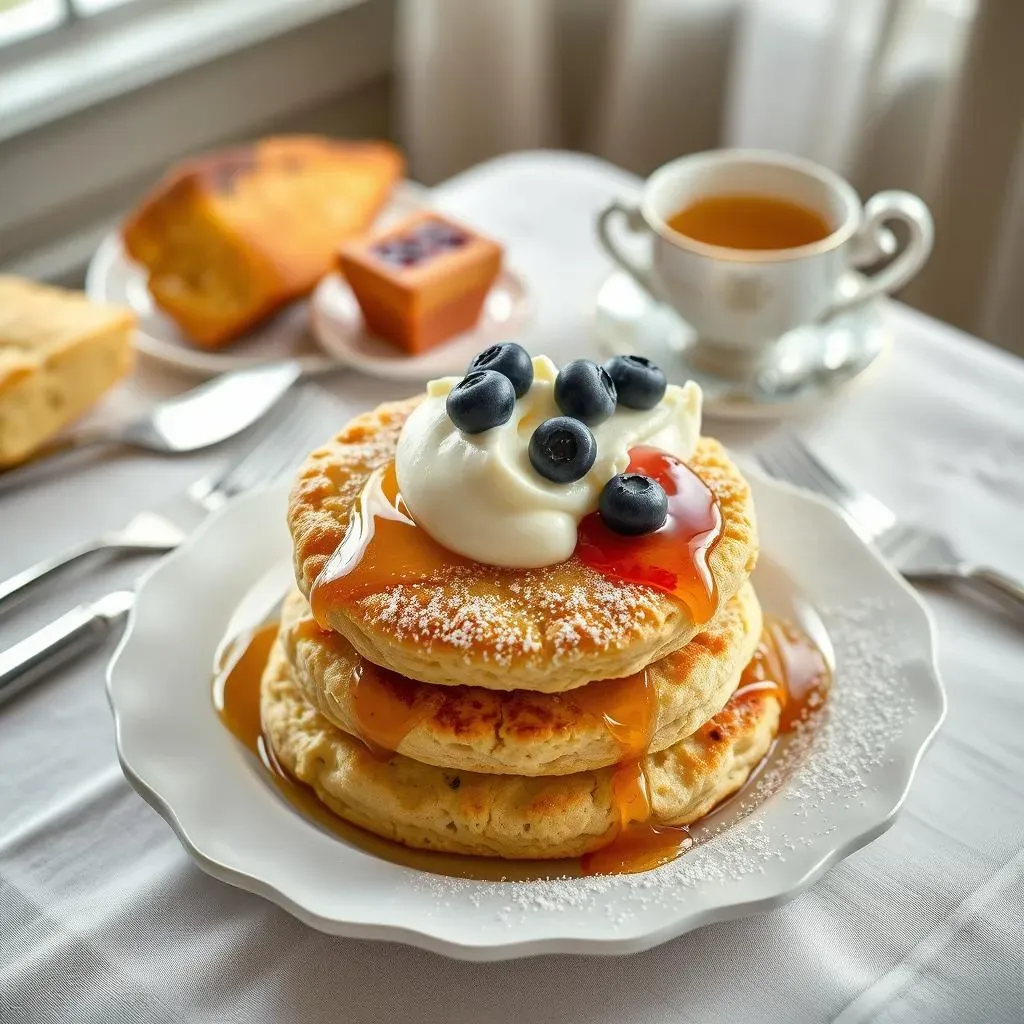Table of Contents
Ever wondered what breakfast was like at Buckingham Palace? While we can only imagine the lavish spreads, one thing is certain: Queen Elizabeth II had a soft spot for simple pleasures, including a delightful pancake recipe. But, these aren't your average flapjacks; they're drop scones, a Scottish variation that's lighter and fluffier. So, what is Queen Elizabeth's pancake recipe? It's a fascinating story that begins with a letter to President Dwight D. Eisenhower.
Unveiling Queen Elizabeth's Pancake Recipe: A Taste of Royalty

Unveiling Queen Elizabeth's Pancake Recipe: A Taste of Royalty
A Royal Revelation: More Than Just a Recipe
Let's face it, when you think of Queen Elizabeth II, pancakes might not be the first thing that springs to mind. But that's precisely what makes this story so charming! It's a peek behind the curtain, revealing a relatable side to a figure often perceived as distant and regal. The recipe itself, for "drop scones," is surprisingly simple, almost like a cross between an American pancake and a British scone. It uses everyday ingredients – flour, sugar, milk, eggs – nothing too fancy or extravagant. This accessibility is key to its enduring appeal. It suggests that even a queen enjoys the simple pleasure of a homemade breakfast.
But the real magic lies in the story surrounding the recipe. It wasn't published in a cookbook or shared on social media. Instead, it was personally sent by Queen Elizabeth to President Dwight D. Eisenhower in 1960. Imagine that: the leader of the free world receiving a handwritten recipe from the Queen of England! It speaks to a genuine connection, a moment of warmth and hospitality between two influential figures. It's a reminder that even amidst the complexities of global politics, there's always room for simple human connection, often fostered around a shared table.
Drop Scones vs. Pancakes: What's the Difference?
Now, you might be thinking, " so they're pancakes. What's the big deal?" Well, while similar to American pancakes, drop scones have a distinct character. The main difference lies in the texture and cooking method. Drop scones are typically thicker and slightly cakier than pancakes, thanks to the use of cream of tartar and baking soda, which gives them a lovely lift. They're also traditionally cooked on a griddle or " girdle" (a flat iron plate), rather than in a frying pan.
This method creates a slightly crustier exterior and a soft, fluffy interior. Think of them as a rustic, more substantial version of a pancake. They're perfect for soaking up butter and syrup, or for enjoying with a dollop of jam and clotted cream. Plus, the name itself adds a touch of whimsy. "Drop scones" – it just sounds so delightfully British, doesn't it? It evokes images of cozy tea rooms and rolling Scottish hills. It's a little detail that adds to the overall charm of this royal recipe.
Feature | Drop Scones | American Pancakes |
|---|---|---|
Texture | Thicker, cakier | Thinner, smoother |
Leavening Agents | Cream of Tartar, Baking Soda | Baking Powder |
Cooking Surface | Griddle or Girdle | Frying Pan |
Origin | Scotland | America |
The Story Behind the Scones: Eisenhower, Balmoral, and a Royal Recipe

The Story Behind the Scones: Eisenhower, Balmoral, and a Royal Recipe
A Presidential Pancake Request?
so picture this: it's 1959, President Eisenhower is visiting Queen Elizabeth at Balmoral Castle, her private estate in Scotland. Balmoral is *the* place where the royals truly unwind, miles away from the prying eyes of the public. It's all rolling hills, heather, and that unmistakable Scottish charm. Now, legend has it (and by "legend," I mean historical record!), Eisenhower and his wife, Mamie, were absolutely smitten with the drop scones served during their visit. So much so, that Eisenhower apparently wrote to the Queen later, requesting the recipe. Can you imagine asking the Queen for her pancake secrets? Talk about a power move!
A year later, in 1960, Queen Elizabeth responded with a handwritten letter that included the coveted drop scone recipe. This wasn't just a scribbled note; it was a carefully penned letter on official stationery, complete with royal instructions and a few helpful tips. She even included suggestions for ingredient substitutions, showing a practical side that's rarely seen. The letter is now preserved in the National Archives, a testament to this unusual exchange between two world leaders. It's a reminder that even those in the highest positions appreciate a good, home-cooked meal.
Balmoral: The Setting for a Royal Breakfast
Balmoral Castle itself plays a crucial role in this story. It's not just a backdrop; it's an integral part of the experience. This Scottish estate has been a private residence of the British Royal Family since 1852, offering them a sanctuary away from the pressures of royal duties. The relaxed atmosphere of Balmoral likely contributed to the informality of the pancake request and the Queen's willingness to share her recipe. It's a place where traditions are cherished, and family recipes are likely passed down through generations.
Think about it: the Queen, surrounded by the rugged beauty of the Scottish Highlands, personally overseeing the preparation of these drop scones for her esteemed guests. It paints a picture of warmth, hospitality, and a genuine desire to share a taste of home. It's a far cry from the formal state dinners and official banquets that are typically associated with royalty. This intimate setting undoubtedly made the experience more memorable for the Eisenhowers and solidified the drop scone's place in culinary history.
Making Queen Elizabeth's Drop Scones: Ingredients and a Dash of Interpretation

Making Queen Elizabeth's Drop Scones: Ingredients and a Dash of Interpretation
Decoding the Royal Recipe: A List of Ingredients
Alright, so you're ready to try your hand at Queen Elizabeth's drop scones? Fantastic! Let's break down the ingredients. The original recipe, as shared with President Eisenhower, is a bit... vague by modern standards. It's more of a guideline than a precise formula. Think of it as a royal nudge in the right direction. The list includes: flour, sugar, milk, eggs, bicarbonate soda, cream of tartar, and melted butter. Pretty standard stuff, right? But the quantities are where things get interesting. The recipe uses terms like "teacups" instead of precise measurements, leaving room for interpretation. That’s where the "dash of interpretation" comes in. It's like the Queen is challenging us to put our own spin on her classic recipe!
Fear not, though! We can decipher these royal riddles and come up with a workable recipe. Based on various interpretations and modern adaptations, a good starting point is approximately 3 cups of flour, 1/4 cup of sugar, 1 1/2 cups of milk, 2 eggs, 2 teaspoons of bicarbonate of soda (baking soda), 3 teaspoons of cream of tartar, and 2 tablespoons of melted butter. Remember, baking is a science, but it's also an art. Feel free to adjust the ingredients to your liking. Want a sweeter scone? Add a bit more sugar. Prefer a thinner batter? Add a splash more milk. Don't be afraid to experiment and make it your own!
The Queen's Tips: A Few Royal Pointers
The Queen's letter to Eisenhower wasn't just a list of ingredients; it also included some valuable tips. She emphasized the importance of beating the mixture well and not letting it stand for too long before cooking. This is crucial for achieving that light and fluffy texture that's characteristic of drop scones. Beating the batter incorporates air, which helps the scones rise beautifully. Letting the batter sit for too long can cause the leavening agents to lose their effectiveness, resulting in flat, dense scones. So, whisk with vigor and get cooking!
Another key point is the cooking surface. As mentioned earlier, drop scones are traditionally cooked on a griddle or girdle. If you don't have one, a large frying pan will work just fine. The important thing is to use a flat, non-stick surface and to cook the scones over medium heat. This will ensure that they cook evenly and don't burn. Before cooking each batch, lightly grease the griddle with melted butter. This will give the scones a lovely golden-brown color and a delicious buttery flavor. And remember, patience is a virtue, especially when it comes to baking. Don't rush the process; let the scones cook slowly and gently until they're golden brown and cooked through.
Ingredient | Approximate Quantity | Notes |
|---|---|---|
Flour | 3 cups | All-purpose flour works well |
Sugar | 1/4 cup | Adjust to your sweetness preference |
Milk | 1 1/2 cups | Add more for a thinner batter |
Eggs | 2 | Large eggs are recommended |
Bicarbonate of Soda (Baking Soda) | 2 teaspoons | Essential for leavening |
Cream of Tartar | 3 teaspoons | Helps create a light texture |
Melted Butter | 2 tablespoons | Adds flavor and richness |
Serving Your Royal Pancakes: Topping Ideas and a Breakfast Fit for a Queen

Serving Your Royal Pancakes: Topping Ideas and a Breakfast Fit for a Queen
Fit for Royalty: Classic Topping Combinations
Alright, you've got a stack of golden drop scones ready to go. Now comes the fun part: the toppings! When it comes to serving your royal pancakes, think classic and elegant. Channel your inner queen and opt for simple yet sophisticated combinations. A generous pat of butter melting into the warm scone is always a winner. Follow that with a drizzle of golden syrup or a dollop of your favorite jam. Raspberry, strawberry, or even a tangy orange marmalade would be divine. And for the ultimate indulgence, add a spoonful of clotted cream. This thick, rich cream is a British staple and perfectly complements the sweetness of the scone.
But don't be afraid to get creative! While the Queen may have preferred a traditional approach, there's no reason you can't put your own spin on things. Consider adding fresh berries, such as blueberries, raspberries, or strawberries, for a burst of color and flavor. A sprinkle of powdered sugar adds a touch of elegance, while a drizzle of honey provides a natural sweetness. And if you're feeling particularly adventurous, try topping your drop scones with a scoop of vanilla ice cream and a sprinkle of chopped nuts. The possibilities are endless! Just remember to keep it classy and delicious.
Beyond the Basics: Elevating Your Pancake Game
Want to take your drop scone game to the next level? Consider adding a few unexpected toppings to surprise and delight your guests. A sprinkle of lemon zest adds a bright, citrusy note that cuts through the richness of the scone. A drizzle of maple syrup, instead of golden syrup, provides a different kind of sweetness. And for a truly decadent treat, try topping your drop scones with Nutella and a sprinkle of hazelnuts. This combination is sure to be a crowd-pleaser, especially with chocolate lovers.
Another fun idea is to create a "pancake bar" with a variety of toppings for your guests to choose from. This allows everyone to customize their own drop scones and experiment with different flavor combinations. Include a selection of jams, syrups, fresh fruits, nuts, and even some savory options, such as crumbled bacon or shredded cheese. This is a great way to make breakfast or brunch a fun and interactive experience. Just remember to provide plenty of napkins – things are bound to get a little messy! After all, enjoying a delicious breakfast is a royal affair, no matter how you top it. So, gather your ingredients, unleash your creativity, and prepare to serve up a breakfast fit for a queen (or king!).
Topping Idea | Description | Why It Works |
|---|---|---|
Butter and Golden Syrup | Classic combination | Simple, sweet, and satisfying |
Jam and Clotted Cream | British tradition | Rich, fruity, and decadent |
Fresh Berries and Powdered Sugar | Elegant and refreshing | Adds color, flavor, and sweetness |
Nutella and Hazelnuts | Chocolate lover's dream | Rich, nutty, and indulgent |
Lemon Zest | Bright and citrusy | Cuts through richness, adds zest |
A Royal Treat for Everyone: Queen Elizabeth's Pancake Legacy
Queen Elizabeth's drop scone recipe is more than just a breakfast option; it's a piece of culinary history, a testament to the simple joys that even royalty appreciates. From its origins as a personal gift to President Eisenhower to its current status as a beloved recipe shared across the globe, these pancakes offer a unique connection to the past. Whether you're a seasoned cook or a kitchen novice, trying your hand at this recipe is a delightful way to experience a taste of royal life and create your own memorable breakfast moments.